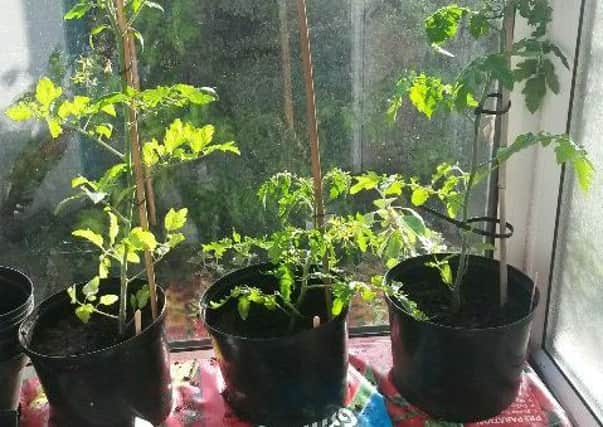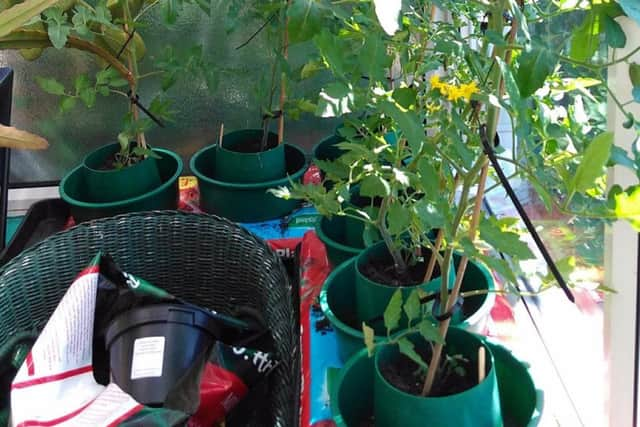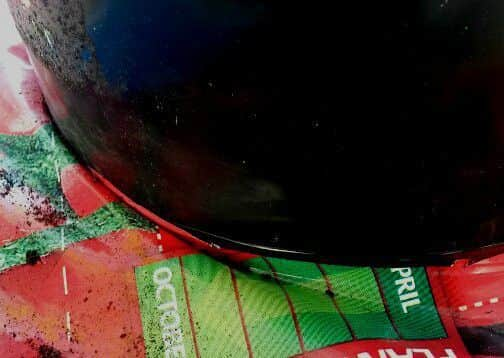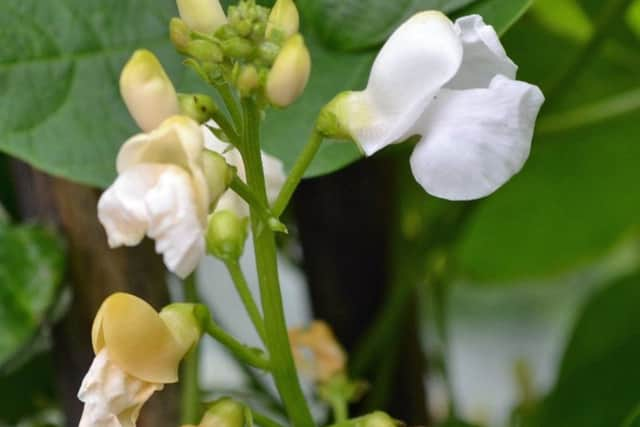Gardening: How to get the biggest crops from your grow bags
This article contains affiliate links. We may earn a small commission on items purchased through this article, but that does not affect our editorial judgement.


One point to note here – if you want to use peat-free grow bags, good luck in finding them – there is plenty of peat-free compost about, so perhaps stick to large pots.
You get what you pay for: Don’t be fooled by bargain basement grow bags, especially when sold at ‘non gardening’ stores – it’s likely the compost will be bulked out with filler, they will be small and need more frequent watering and feeding.


Advertisement
Hide AdAdvertisement
Hide AdBuy the biggest you can find: Usually labelled as ‘extra large’ with a capacity of 50-55 litres, compared with 25-33 litres.
The dimensions of grow bags (length x width) are usually standard, as they are made to fit into one-size drip-proof trays – it’s the depth that changes.
This extra depth means a better root system can develop and those times when you invariably forget to water won’t be so critical.
Do you need actual ‘tomato bags’ for tomatoes?: That’s your choice and you’ll buy generic bags more cheaply if cost is an issue.


Advertisement
Hide AdAdvertisement
Hide AdHowever, in-soil food is tailored towards fruiting crops that need a lot of potash.
Check how long they will feed plants for: most of the market leaders for tomato bags will feed for about six weeks with a high potash feeder.
Use ring culture pots for tomatoes: These are basically large plant pots with no bottom (you can make your own) that sit on top of the grow bag, giving an extra area for root run.
You can also buy a host of grow pots (with an outer ‘moat’ to deliver water slowly direct to the lower roots and ‘plant haloes’ some of which have supports for canes built in (see below). I always use a combination of the two – I like ordinary ring culture pots – they’re cheap, plastic ones last forever and they hold more soil than the ‘moat’ varieties.


Advertisement
Hide AdAdvertisement
Hide AdCane support: A must for indeterminate (cordon) tomato varieties, which are one long stem and must be tied into a stake.
If you’re using a grow bag flat with no ring culture pot on top, this can be a problem, as there is no depth of soil to keep the canes upright.
Solution – ring culture pots (put the canes in first, then the plant) or devices like Crown Garden Products Grow Bag Frame, www.crowngardenproducts.comGet a tight fit: When using ring culture pots, don’t plonk them on the top and hope for the best. Standard plastic pots have a 0.5cm inward rim at the bottom – mark on the bag where this line is then cut out the hole.
As it’s smaller than the outside, push and twist the pot into the grow bag hole (easier than it sounds, as it’s quite stretchy).


Advertisement
Hide AdAdvertisement
Hide AdYou then have a relatively watertight seal so water can seep slowly into the soil.
Pots with moats often have ‘teeth’ that mark out the pot shape.
Mini-greenhouses: Most are built with grow bags in mind but I use the bare frames to support my cordon plants and canes – it’s a cheap and easy way to stop them from keeling over.
Be creative: Look at turning bags on their end and planting in the top. The soil depth means canes will be held securely.
JOBS TO DO THIS WEEKEND
Advertisement
Hide AdAdvertisement
Hide AdRunner beans need well-prepared ground and suitable supports for the shoots to twine around and grow up.


Give greenhouse plants more space as they put on new growth. This will help to prevent disease, and to contain early pest infestations.
Perennials such as hollyhock, delphiniums and lupins can be sown directly into drills outside. If space is limited, sow them into pots and place them in a cold frame or by the base of a sheltered wall in filtered sunlight.
Spreading and trailing plants can become tatty – trim them back after flowering encourages fresh growth and new flowers.
Tackle bindweed when it appears in a border.
Advertisement
Hide AdAdvertisement
Hide AdStake tall perennials to prevent wind damage to flower spikes.
Inspect lilies for the scarlet lily beetle and crush them.
Tie in climbing and rambling roses as near to horizontal as possible. This will encourage side-shoots to grow along the length of stem, for more flowers.
Mow pathways through areas of long meadow grass to allow access to other areas of the garden.
Ward off carrot fly by covering plants with a fine woven plastic mesh like Enviromesh.
Advertisement
Hide AdAdvertisement
Hide AdNet cherries against birds, keep protection in place for all soft fruit.
GET IN TOUCH
For more on these topics, plus cook what you grow, traditional recipes, North East information, environmental news and more, log on to www.mandycanudigit.com (now smartphone friendly), www.sunderlandecho.com/gardening, follow me on Twitter @MandyCanUDigIt or you can like me on Facebook at Mandycanudigit